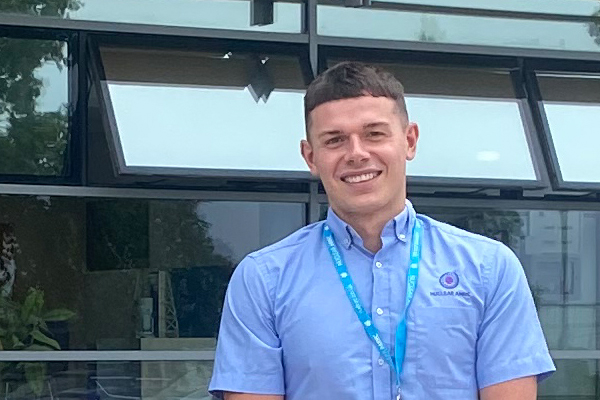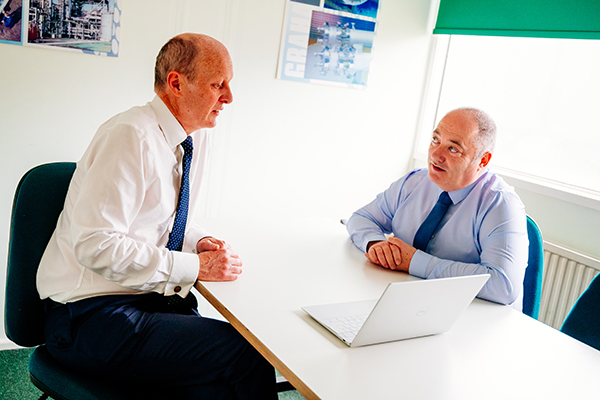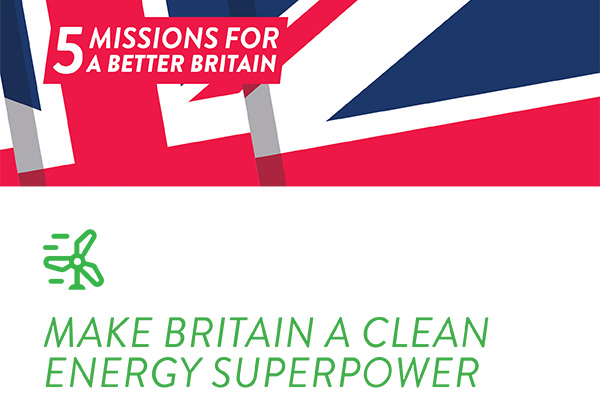Jake Kilcoyne has worked as a research engineer at the Nuclear AMRC since November 2021, with the centre sponsoring him through the nucleargraduates programme. As he heads to Magnox for his next placement, we asked him what he’s learnt so far.

I graduated from an integrated masters degree in Mechanical Engineering at the University of Strathclyde in the summer of last year. I had a keen desire to enter the rapidly expanding nuclear industry, which prompted me to apply for the nucleargraduates scheme. I was drawn to the scheme as I was excited by the prospect of working across different businesses, trialling different roles, and gaining unique experiences across the two years.
I started on the scheme in November at the Nuclear AMRC and, since then, my enthusiasm for nuclear has grown. I believe this is a great time to be starting a career in the industry. From the decommissioning of the Magnox and AGRs, to the build of the new fleet of PWRs, the opportunities within the British nuclear landscape are endless. And with technologies such as SMRs and fusion still in their infancy, I believe there is an opportunity for this generation of the nuclear workforce to help pave the way to a carbon-free, sustainable future.
Working at the Nuclear AMRC has presented the exciting opportunity to work on cutting edge developments in manufacturing which help bridge the gap between academia and industry. I was placed within the manufacturing engineering group within the Nuclear AMRC – however, one of my favourite aspects of the secondment was the opportunity to support a wide range of interesting projects, spanning different departments and subject areas.
In my time at the Nuclear AMRC, I have supported commercial and collaborative research and development, as well as in-house development projects, in areas ranging from lean manufacturing to fusion technology.
Through supporting these projects, I have developed my technical skills such as report writing and CAD modelling. My first experiences of working in professional teams and liaising with external stakeholders also promoted the advancement of soft skills such as communication, time-keeping and problem-solving.
The range of projects allowed me to extend my knowledge in different aspects of manufacturing, including non-destructive testing, hot isostatic pressing, and welding systems. I was also fortunate enough to attend Fit For Nuclear site visits which helped to enhance my understanding of nuclear supply chain requirements.
While on secondment, I had the opportunity to pursue CPD courses and attend conferences through the Nuclear AMRC. I completed useful NSAN courses in nuclear manufacturing and SMRs, as well the Siemens plant simulation basics course. I also attended the HVM Catapult roadshow at the Warwick Manufacturing Group. This event was great fun and gave an opportunity to learn about specialist manufacturing technologies, while networking with professionals within different centres of the HVM Catapult.
Throughout the secondment, everyone I worked with was friendly, and I felt welcomed at the centre. I was able to seek advice and guidance from more experienced colleagues for project work and general career advice, with everyone happy to offer their support.
For my next secondment, I will be working as a project engineer for Magnox, based at the Hunterston A decommissioning plant. I am looking forward to gaining on-site experience and enhancing my understanding of the regulatory aspects of a nuclear licenced site, while continuing my professional development.
I am certain that the skills and experiences obtained during my time at the centre will be greatly beneficial moving forward into this role, and my further career.






